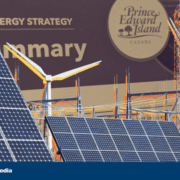Washington, DC — In detailed comments submitted to the Environmental Protection Agency (EPA), the Solar Energy Industries Association (SEIA) said that “solar contributes to a balanced portfolio of energy resources,” which can help states meet proposed new carbon regulations under the EPA’s Clean Power Plan, benefitting both the economy and environment.
“We are completely supportive of the EPA’s overall goals, and believe the Clean Power Plan will significantly help to fight the devastating impacts of climate change,” said Rhone Resch, SEIA president and CEO. “To its credit, the EPA has included solar as part of its definition of ‘best system of emission reduction’ (BSER), but we also believe it’s important for the agency to include, among other things, distributed PV as part of its final rule. Today, distributed PV is one of the largest and fastest-growing segments of the renewable energy market and needs be part of the BSER in order to maximize the future effectiveness of the EPA’s Clean Power Plan.”
This year, the United States will install an estimated 7.4 gigawatts (GW) of solar – a 42 percent increase over 2013 – making it the best year ever for solar installations in America. What’s more, solar accounted for a record 53 percent of all new electric generation capacity installed in the first half of 2014, pushing solar to the front as the fastest-growing source of renewable energy in America.
“Today, the solar industry employs 143,000 Americans and pumps nearly $20 billion a year into the U.S. economy,” Resch added. “This remarkable growth is due, in large part, to smart and effective public policies, such as the solar Investment Tax Credit (ITC), Net Energy Metering (NEM) and Renewable Portfolio Standards (RPS). By any measurement, these policies are paying huge dividends for both the economy and environment, putting us in a unique position to be able to help states meet future obligations under the EPA’s Clean Power Plan.”















Comments